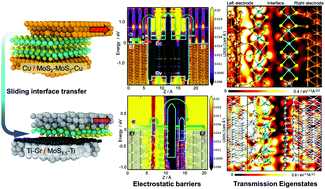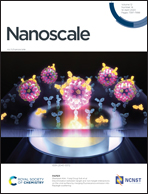Achieving a superlubricating ohmic sliding electrical contact via a 2D heterointerface: a computational investigation†
Abstract
Simultaneously achieving low friction and fine electrical conductance of sliding electrical contacts is a crucial factor but a great challenge for designing high-performance microscale and nanoscale functional devices. Through atomistic simulations, we propose an effective design strategy to obtain both low friction and high conductivity in sliding electrical contacts. By constructing graphene(Gr)/MoS2 two-dimensional (2D) heterojunctions between sliding Cu surfaces, superlubricity can be achieved with a remarkably lowered sliding energy barrier as compared to that of the homogeneous MoS2 lubricated Cu contact. Moreover, by introducing vacancy defects into MoS2 and substituting Cu with active metal Ti, the Schottky and tunneling barriers can be substantially suppressed without losing the superlubricious properties of the tribointerface. Consequently, a high conductivity ohmic contact with low sliding friction could be realized in our proposed Ti–MoS1.5–Gr–Ti system, which provides a potential strategy for tackling the well-known dilemma for high performance sliding electrical contacts.



 Please wait while we load your content...
Please wait while we load your content...